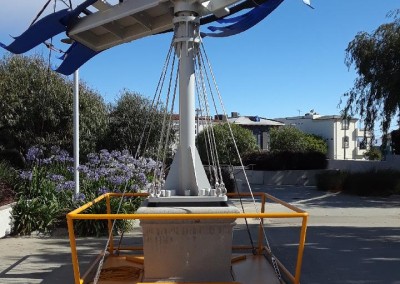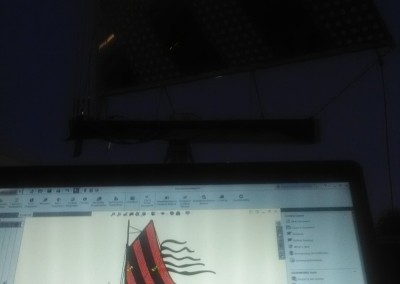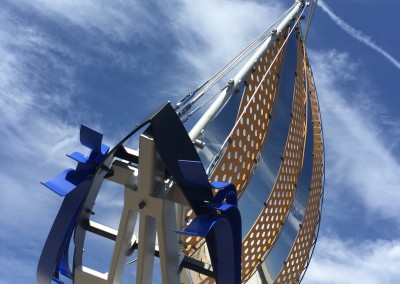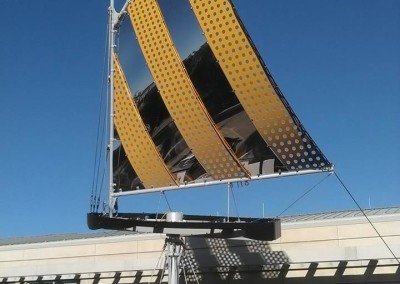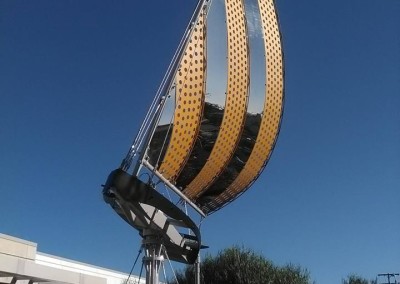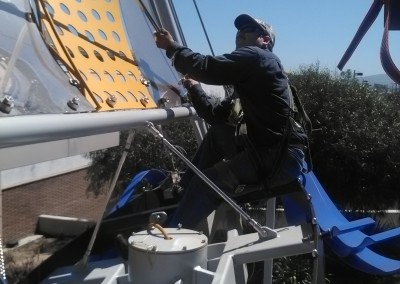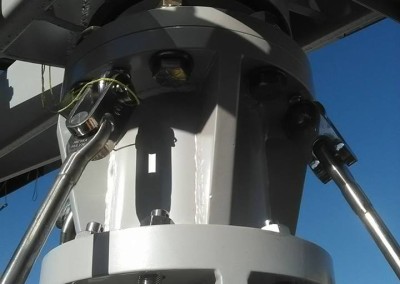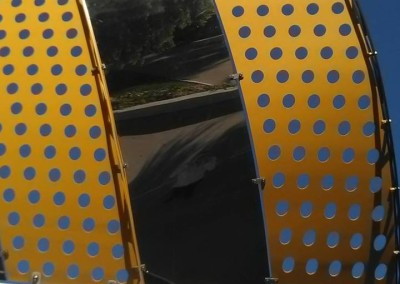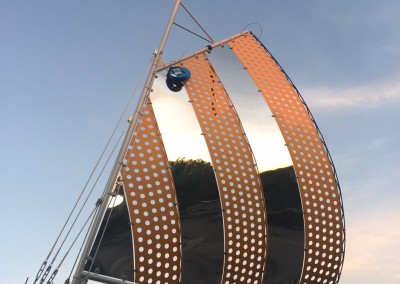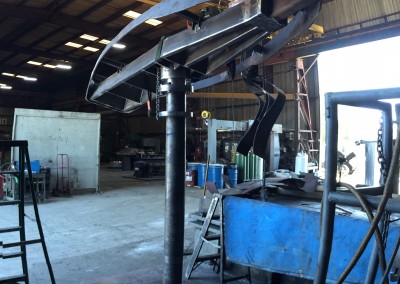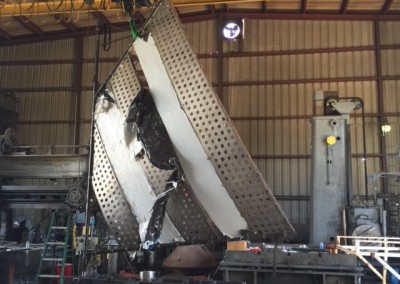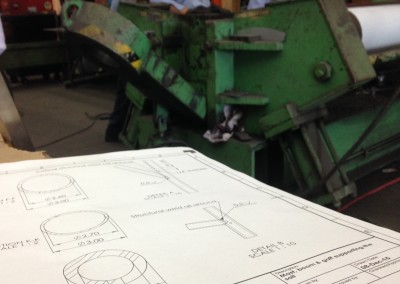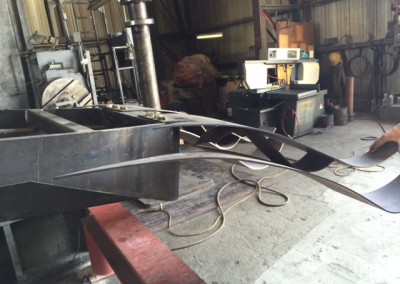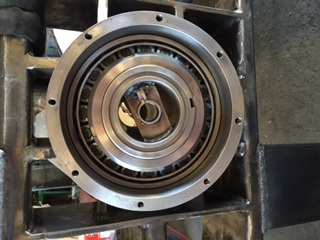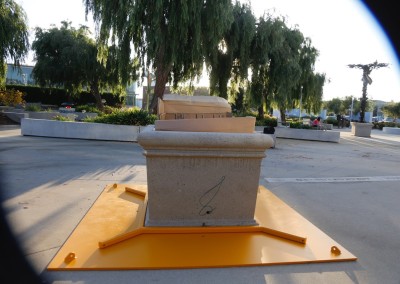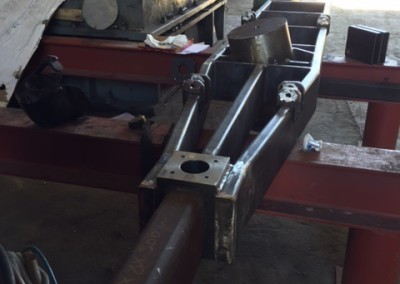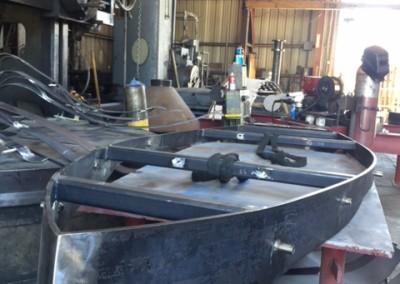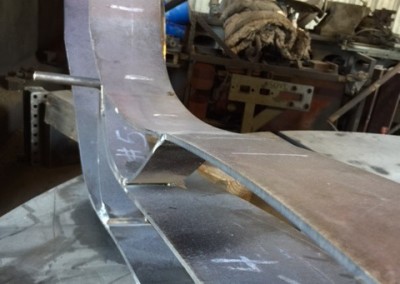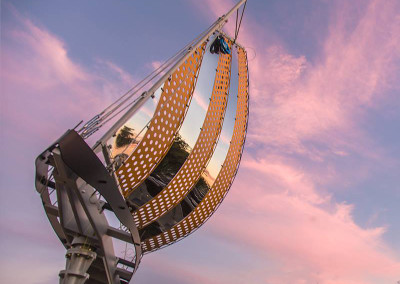The engineering of a boat sculpture
I was asked by Asher Kelman, the artist of the sculpture, to help with the engineering of a boat sculpture. A project that was still in the starting phase. Initially my tasks where the flow simulations, calculating the pressure at the boat, sail and its frame and the engineering of the internal frame construction. This quickly led to the engineering of the whole sculpture.
A sculpture that will be 31 ft high and 17 ft long! A most impressive sculpture that will be located at the sculpture garden in Los Angeles.
The sailboat´s hull was planned to be made of wood, with a steel internal frame for strength. However due to the extensive costs and time of making the hull out of wood, this has changed to a steel rim. Steel is the main material used in this sculpture. The selection of steel is of most importance, different composition of steel can have different mechanical and chemical properties, with all a different price. Some parts required a higher strength, less elastic strain and other parts require a No 8. polished stainless finish.
One of the points of attention is the corrosion resistance of the sculpture. The sculpture will be located close to the coast, where the air is humid and contains a high level of salt. As salt breaks down, the chloride ion of the salt increases the conductivity of the electrolyte and therefore increasing the galvanic corrosion. A most used combination of galvanized carbon steel and stainless. Where the contact between both steel is separated with composite washers and bushings, this to avoid electric potential difference between the sorts of steel.
The sculpture is fully 360° rotational. A taylor made bearing assembly has been made, two conical single row bearings to take up the moment and vertical load of the sculpture. The bearing is located 9 ft from the ground on a steel post that is tight down with steel wire cables. Electrical swivels are used to make sure no electrical cable get tangled or turned. The electric cables are used for the LED-strips that will light up the sculpture and the wind waves coming of the sail.
The sail surfaces where designed to be rolled conically with a changing conical parameters throughout the sail height. This has been a challenge, no company close by that possessed the required machinery.
The sails were formed with the help of guidelines, continuously changing the roller distance and the use of 4 strong men to change the feed angle of the steel plate.
Designing a sculpture that consist out of creative impulses and constant changes is never black and white. The engineering process is different compared to any other kind of engineering project. As an engineer you will have to go with the flow, keep adjusting, being flexible and make sure you can realize the ideas of the artist without compromising on any safety margins. Being critical without reducing the designer’s freedom of creation.
However not finished yet, the collaborating so far with Asher Kelman has been a blast. A real engineering adventure.
Hopefully we will do some more work together in the near future.
- Flow simulation (CFD) 5%
- Preliminary design (CAD) 15%
- Calculations (FEM) 25%
- Detailed design (CAD) 35%
- Rendering 5%
- Technical support 15%

